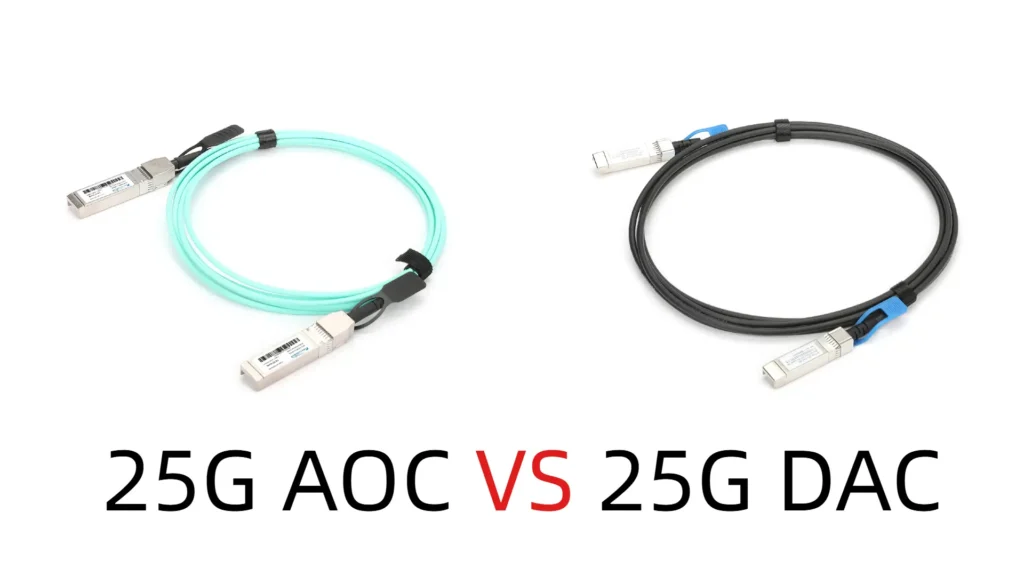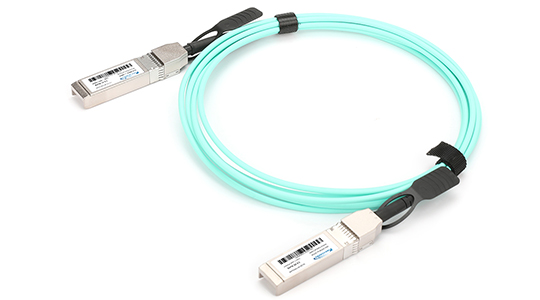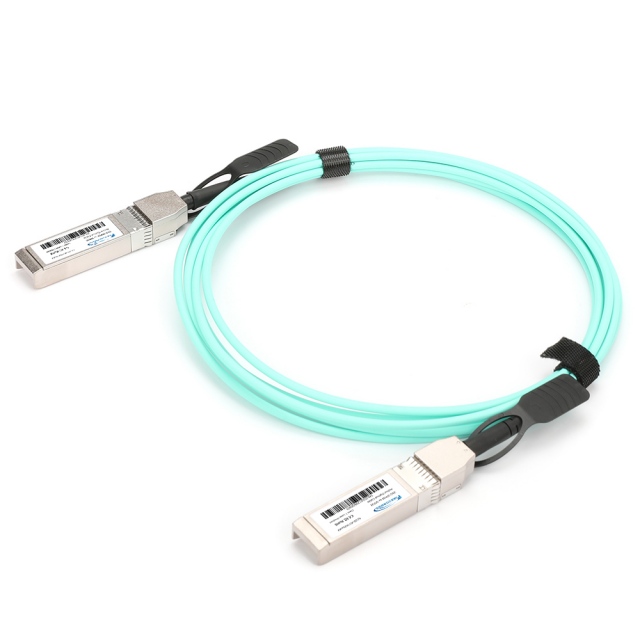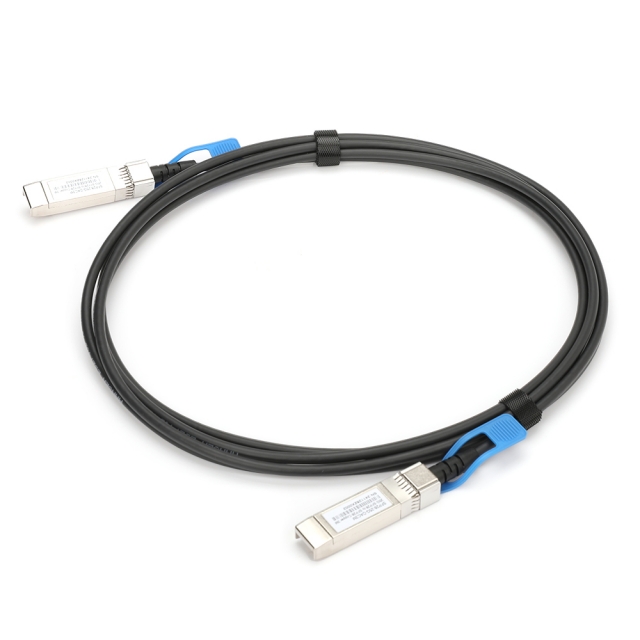25G DAC cable vs 25G AOC cable, which is better?
In modern high-speed data centers, 25 Gbps connections have become a standard for server-to-switch and switch-to-switch links. Two of the most common options are the 25G DAC cable (25G Direct Attach Cable) and the 25G AOC cable (25G Active Optical Cable).
While both deliver the same 25 Gbps bandwidth using the SFP28 interface, their construction, performance, and ideal use cases differ significantly. Choosing the right one can impact latency, power consumption, cost, and cabling efficiency.

What is a 25G DAC Cable?
A 25G DAC cable (25G direct attach cable) is a pre-terminated copper twinax cable with integrated SFP28 connectors.
Passive DAC cables have no active electronics, offering near-zero power consumption but shorter reach (up to ~5 m).
Active DAC cables include signal-conditioning chips to extend the distance (up to ~10–15 m).
Advantages:
Lowest cost option for short-distance links.
Extremely low latency (sub-nanosecond per meter).
Minimal power draw for passive versions.
Simple plug-and-play deployment.
Disadvantages:
Limited reach (generally ≤15 m even for active DAC).
Bulkier and less flexible than fiber.
Susceptible to electromagnetic interference (EMI).
Best Use Case: Short in-rack or adjacent-rack connections where cost and power efficiency matter most.

What is a 25G AOC Cable?
A 25G AOC cable (25G active optical cable) is a multimode fiber assembly with integrated optical transceivers at each end. The built-in electronics convert electrical signals to light and back, allowing for longer reach than copper DACs.
Advantages:
Supports much longer distances (25–100 m, depending on fiber type).
Immune to EMI, ensuring stable performance in noisy environments.
Thinner, lighter, and more flexible than copper DACs.
Maintains excellent signal integrity with very low bit error rates.
Disadvantages:
Higher cost compared to DACs.
Consumes more power (~1 W per module).
Requires careful handling to avoid fiber damage.
Best Use Case: Cross-rack, row-to-row, or high-EMI environments where longer reach and flexible routing are priorities.

Side-by-Side Comparison
| Feature | 25G DAC Cable (Direct Attach Copper) | 25G AOC Cable (Active Optical Cable) |
|---|---|---|
| Medium | Copper twinax | Multimode fiber |
| Typical Reach | Passive: ≤5 mActive: ≤15 m | 25–100 m |
| EMI Immunity | No | Yes |
| Cable Size & Weight | Thick, heavy, less flexible | Thin, lightweight, flexible |
| Power Consumption | Passive: ~0 WActive: <1 W | ~1 W per module |
| Latency | Extremely low | Very low |
| Cost | Lowest | Higher |
Deployment Scenarios in Data Centers
In-rack connections (0–3 m) → Use 25G DAC cable for top-of-rack links to servers.
Adjacent racks (3–10 m) → Use active DAC if distance exceeds passive limits but remains under ~15 m.
Cross-aisle or long row links (>15 m) → Use 25G AOC cable for longer reach without signal loss.
High-EMI environments → Prefer 25G active optical cable for complete EMI immunity.
High-density deployments → Use AOCs where reduced cable bulk improves airflow and management.
Choosing the Right Option
When deciding between 25G DAC cable and 25G AOC cable, focus on:
Distance requirements – DAC for short runs, AOC for long.
Power budget – DAC is more energy-efficient, especially at scale.
Environmental conditions – AOC handles EMI and complex routing better.
Budget – DAC offers the lowest cost per link for short distances.

FAQ: 25G DAC Cable vs. 25G AOC Cable
Standard passive 25G DAC cables are limited to about 5 meters. Active DAC versions can extend reach up to roughly 10–15 meters, but beyond that, signal integrity may degrade. For links longer than 15 meters, a 25G AOC cable is recommended.
A passive 25G DAC cable consumes virtually no power, while a 25G active optical cable requires around 1 W per module for optical signal conversion. In large-scale deployments, DAC cables offer significant energy savings.
Choose a 25G active optical cable when you need to connect equipment over longer distances (25–100 m), in high-EMI environments, or when lightweight, flexible cabling is preferred for easier routing in high-density racks.
Conclusion
For data center professionals, the decision often follows a simple pattern:
25G DAC cable (25G direct attach cable) for short, cost-sensitive, and power-efficient connections.
25G AOC cable (25G active optical cable) for longer, EMI-resistant, and flexible cabling needs.
In many modern facilities, a hybrid approach is used — DACs inside the rack, AOCs between racks — to balance cost, performance, and scalability.




